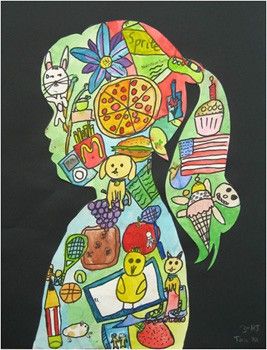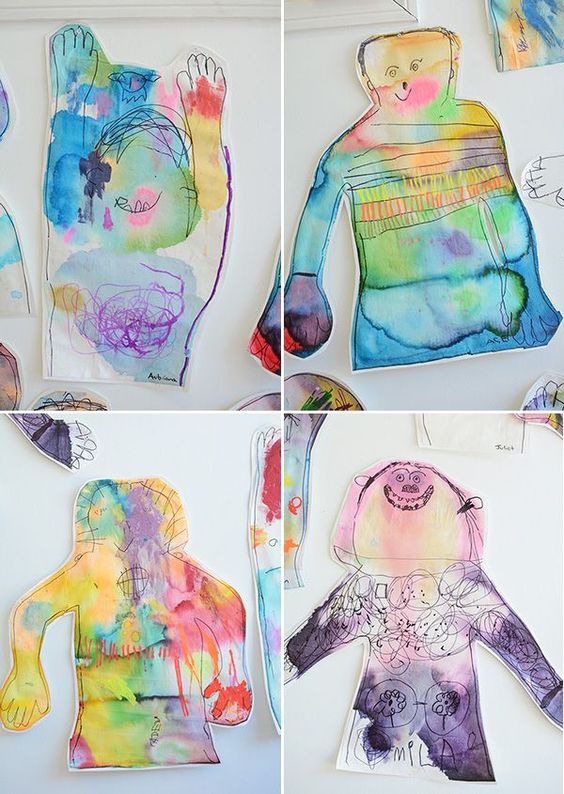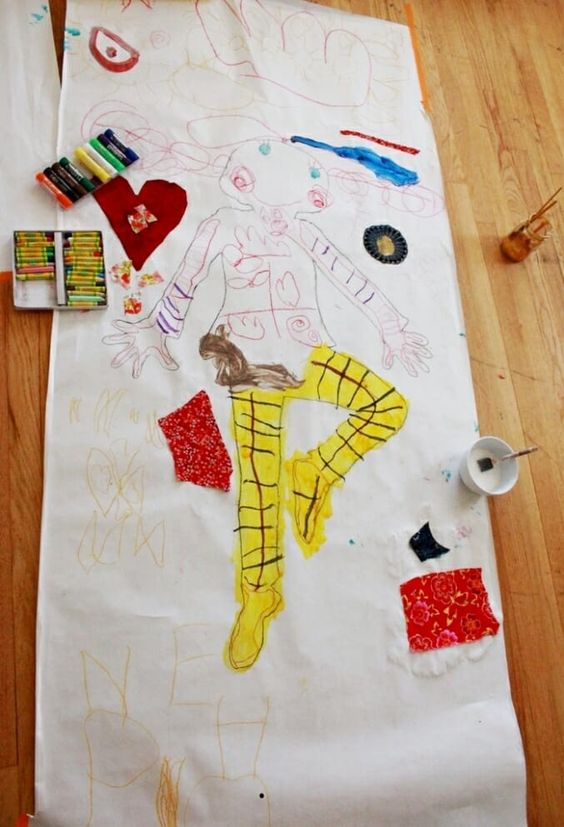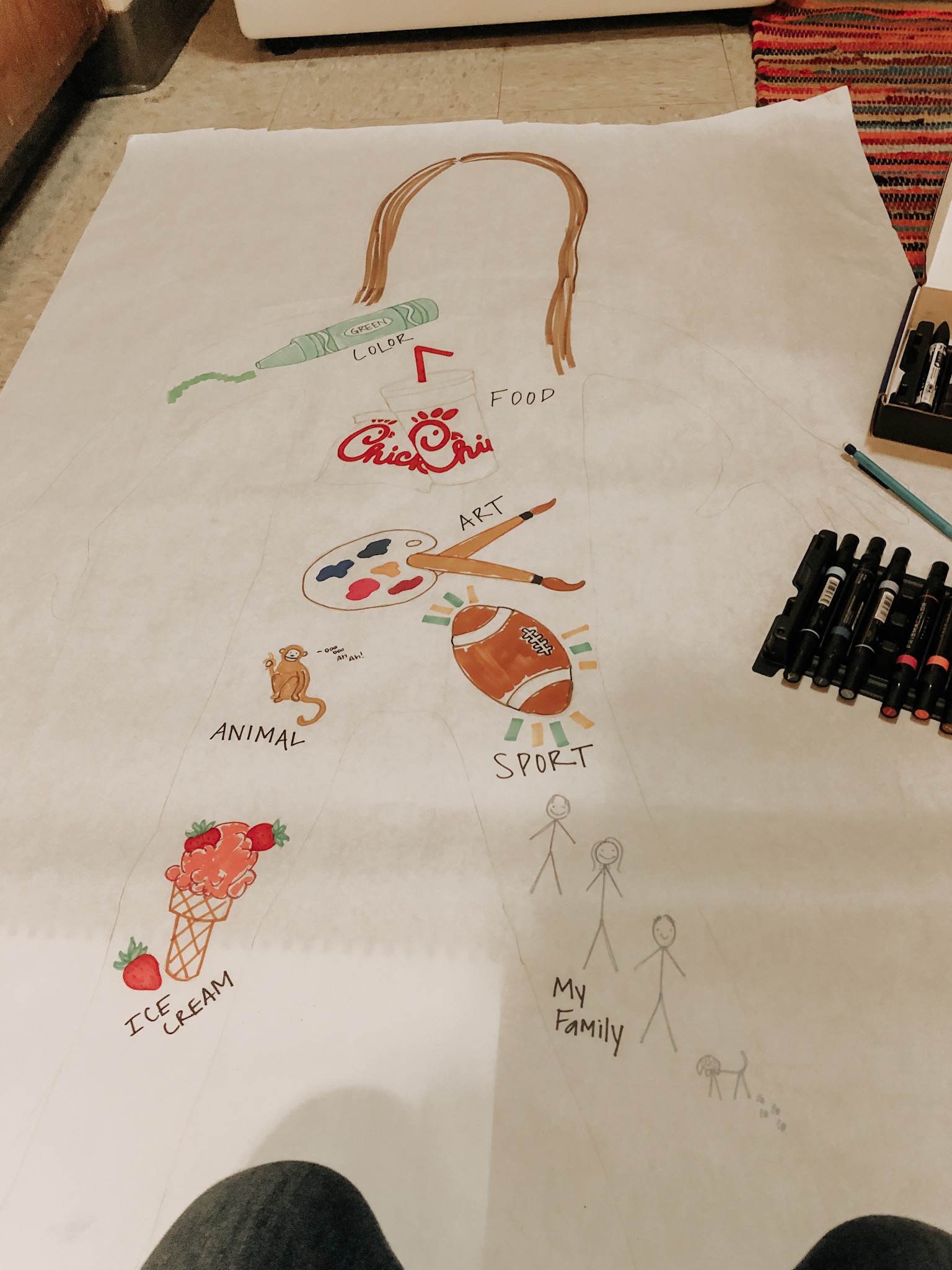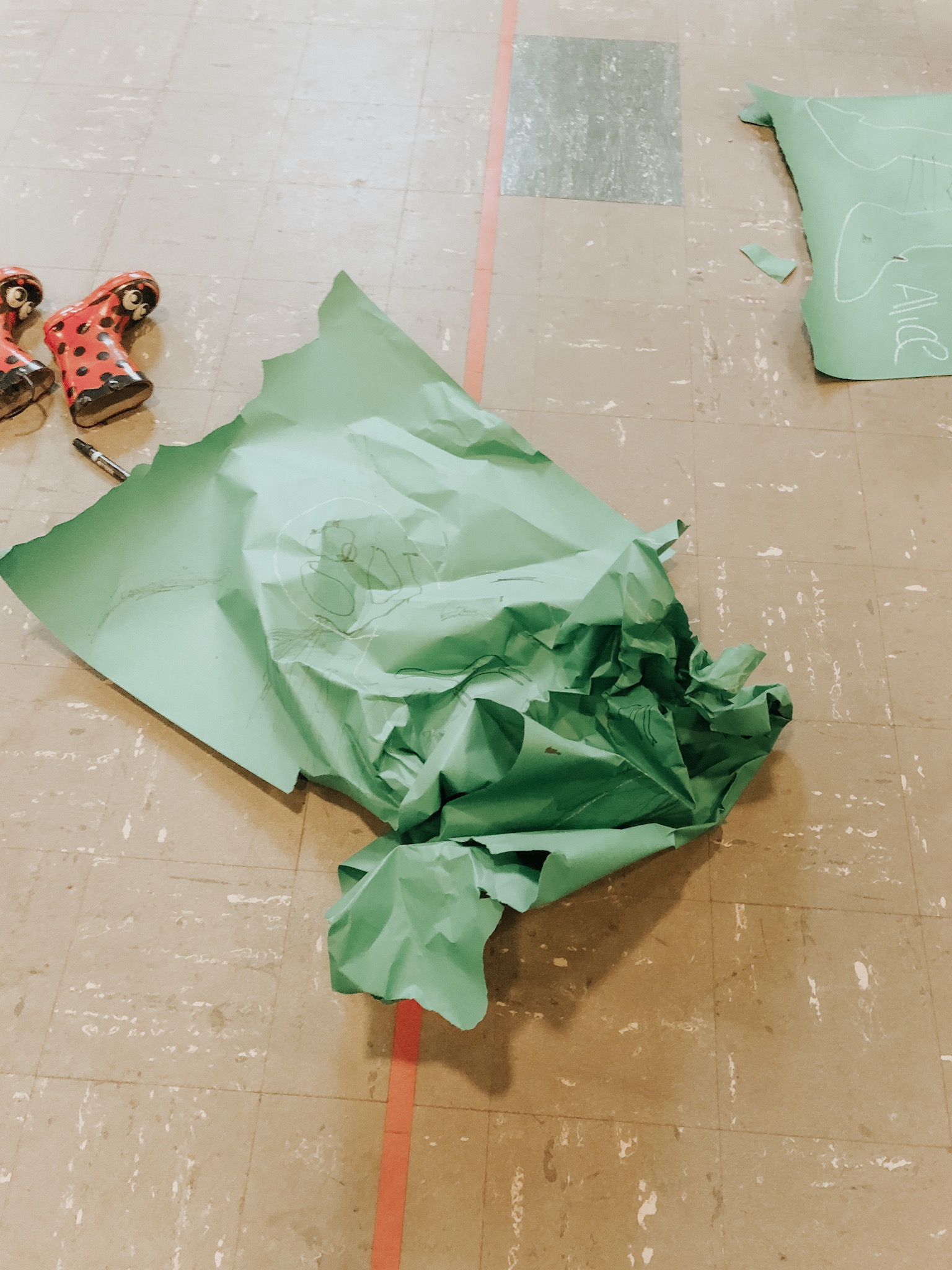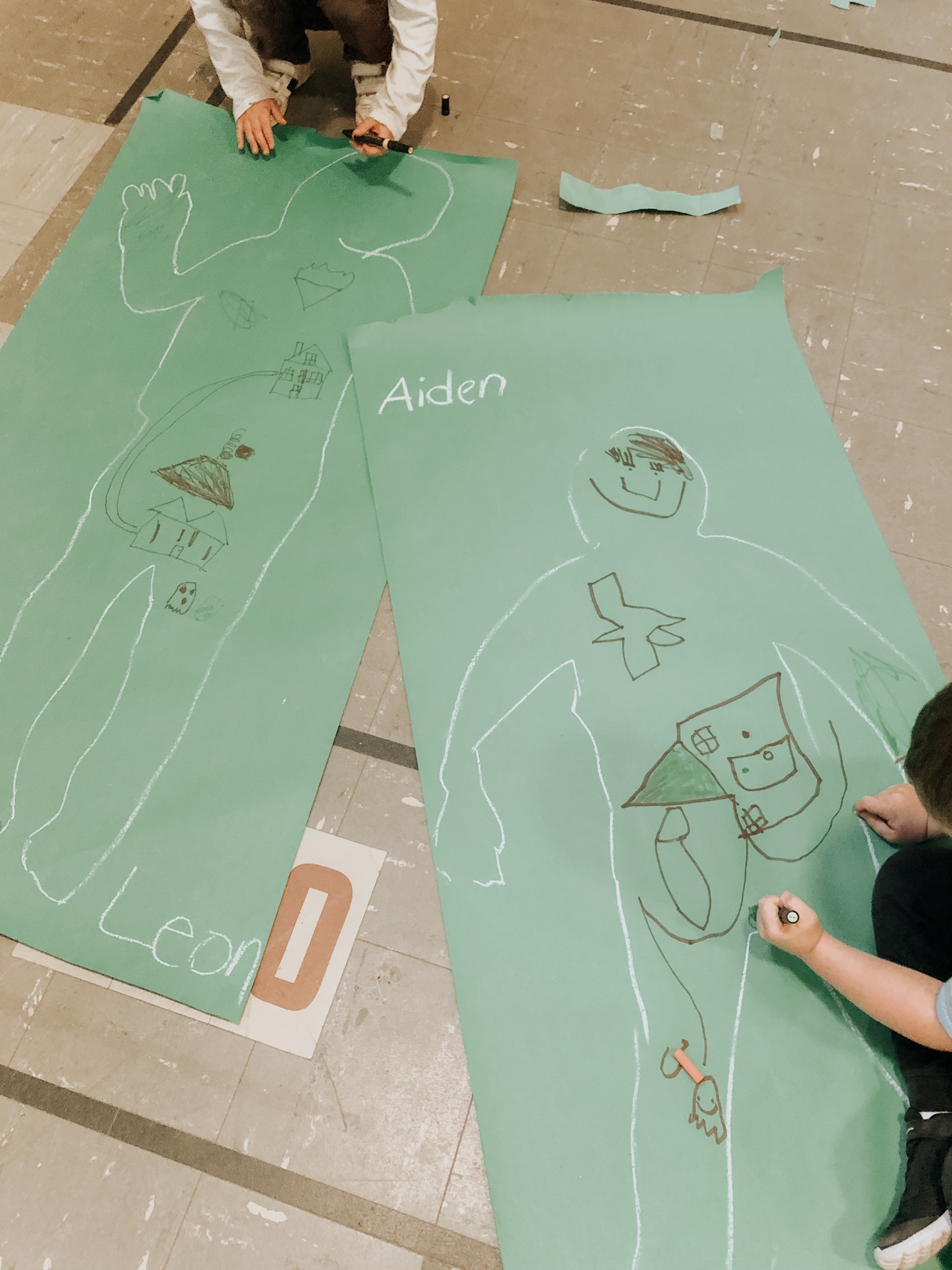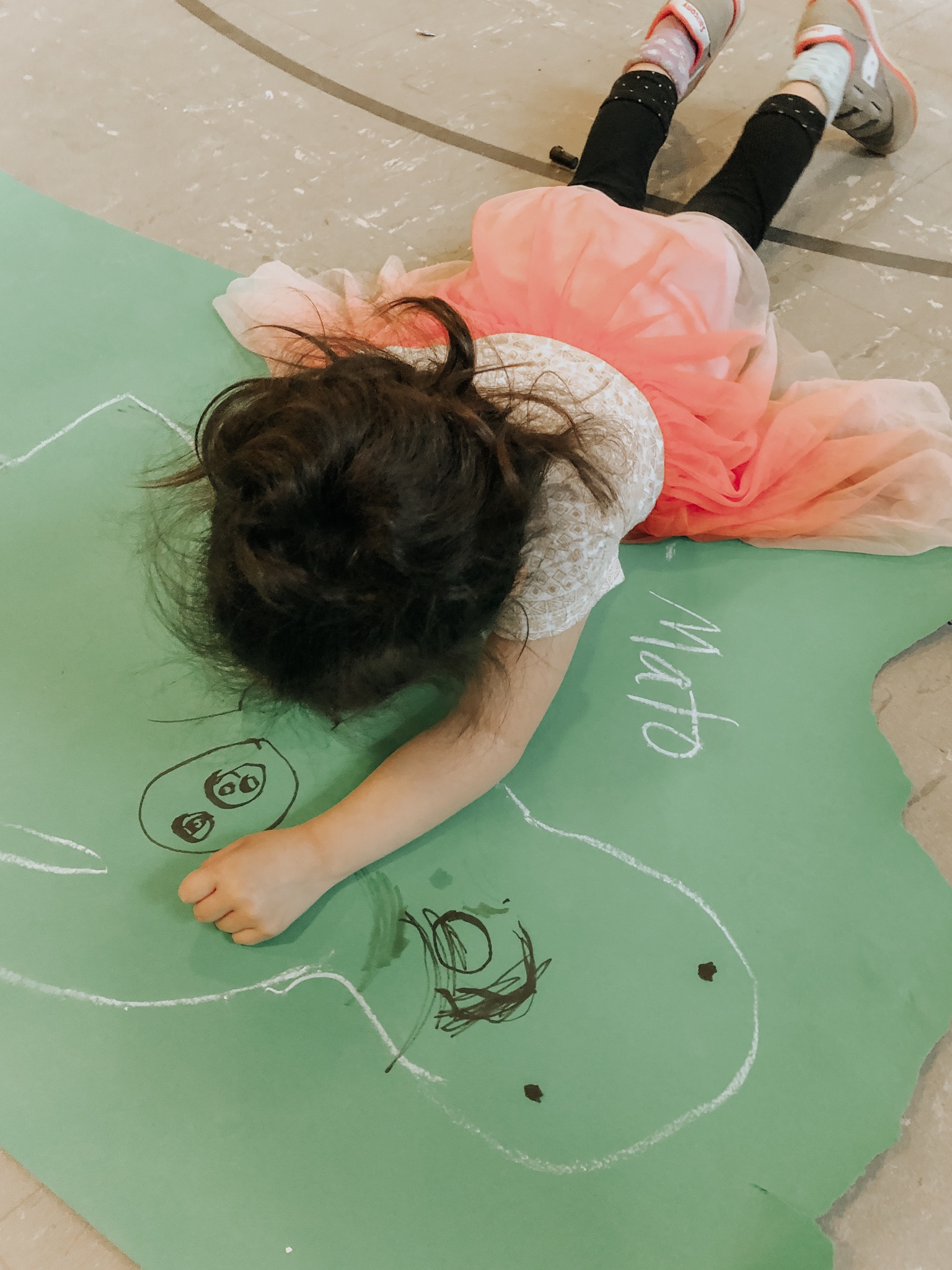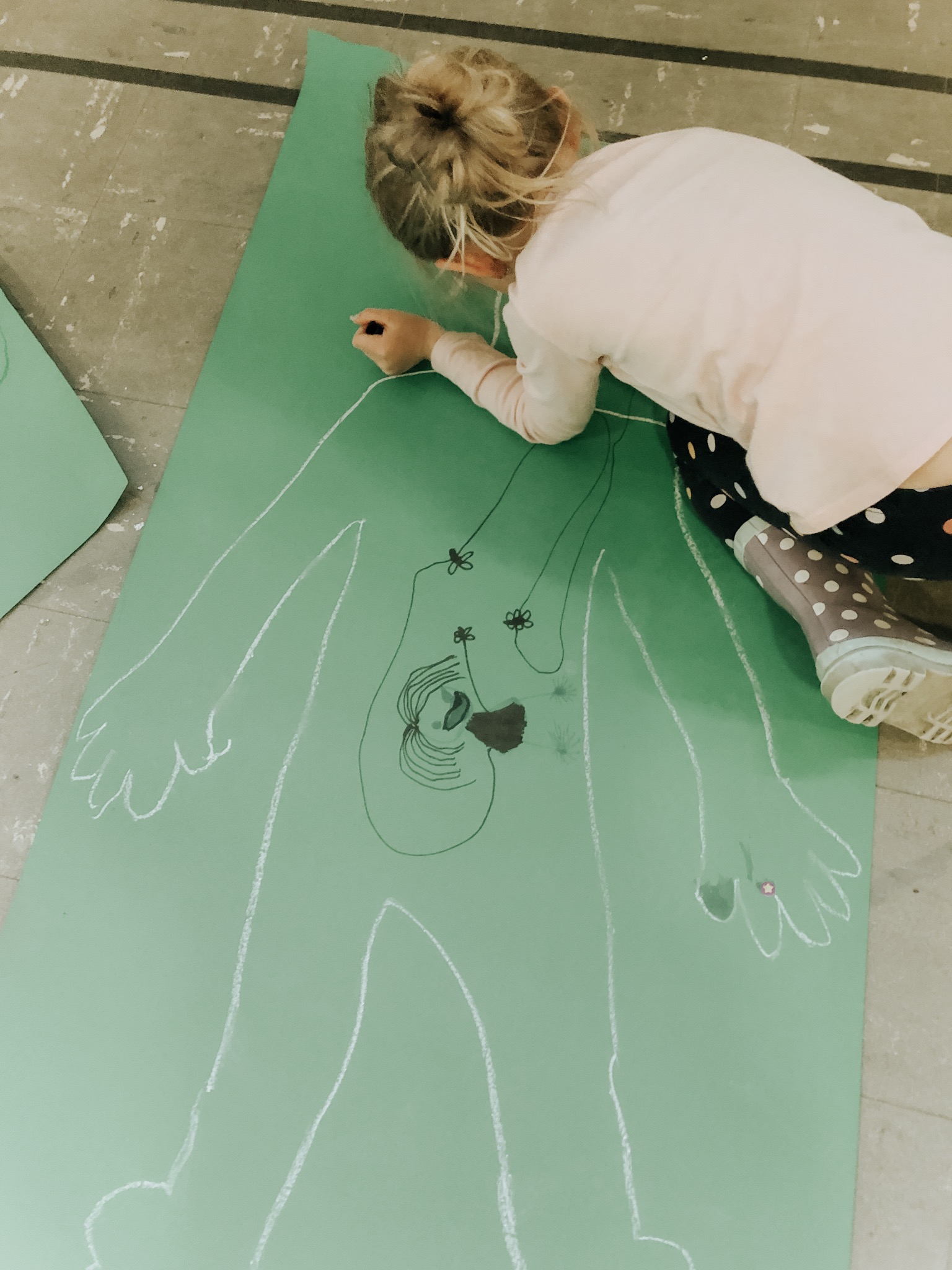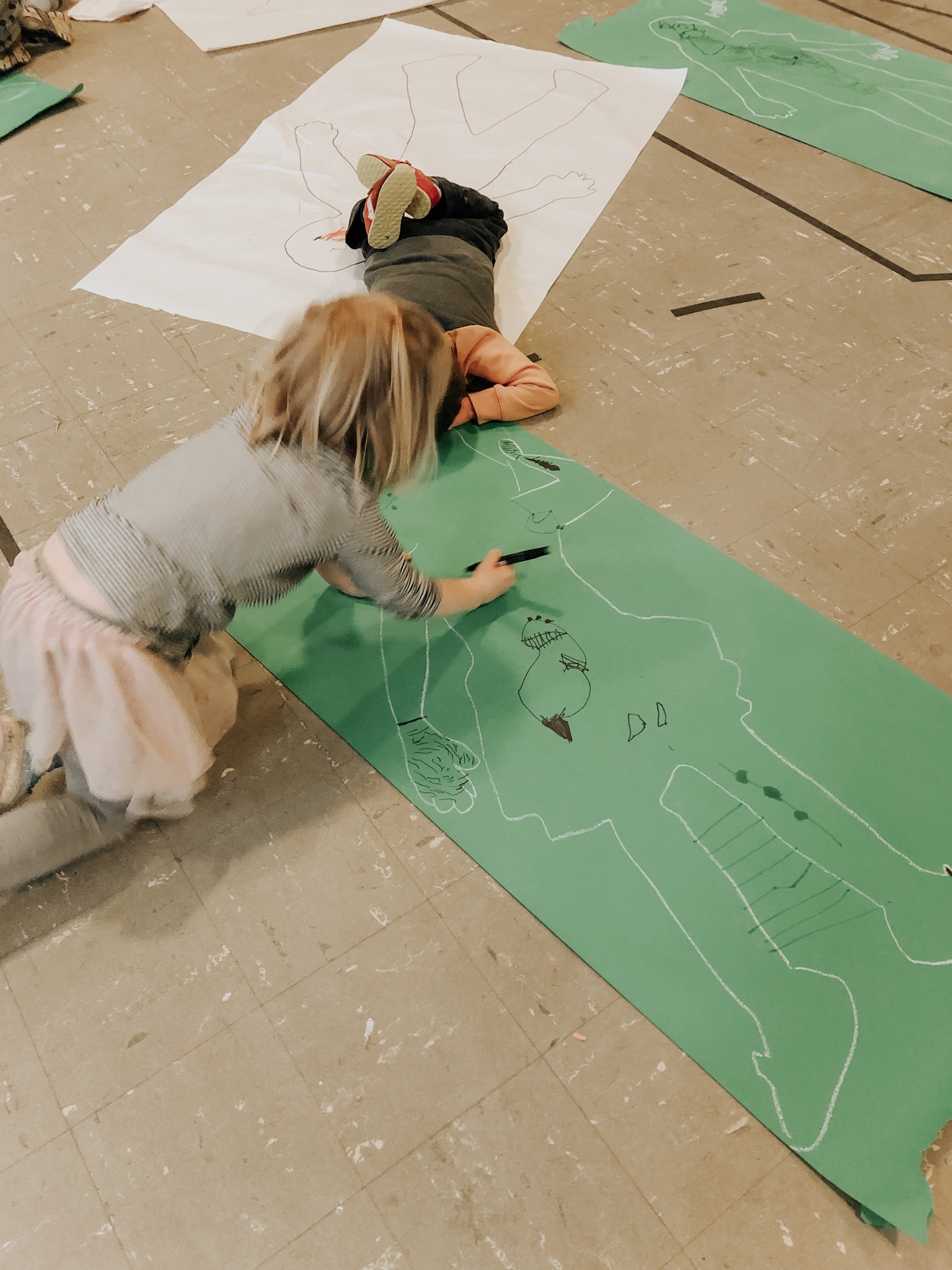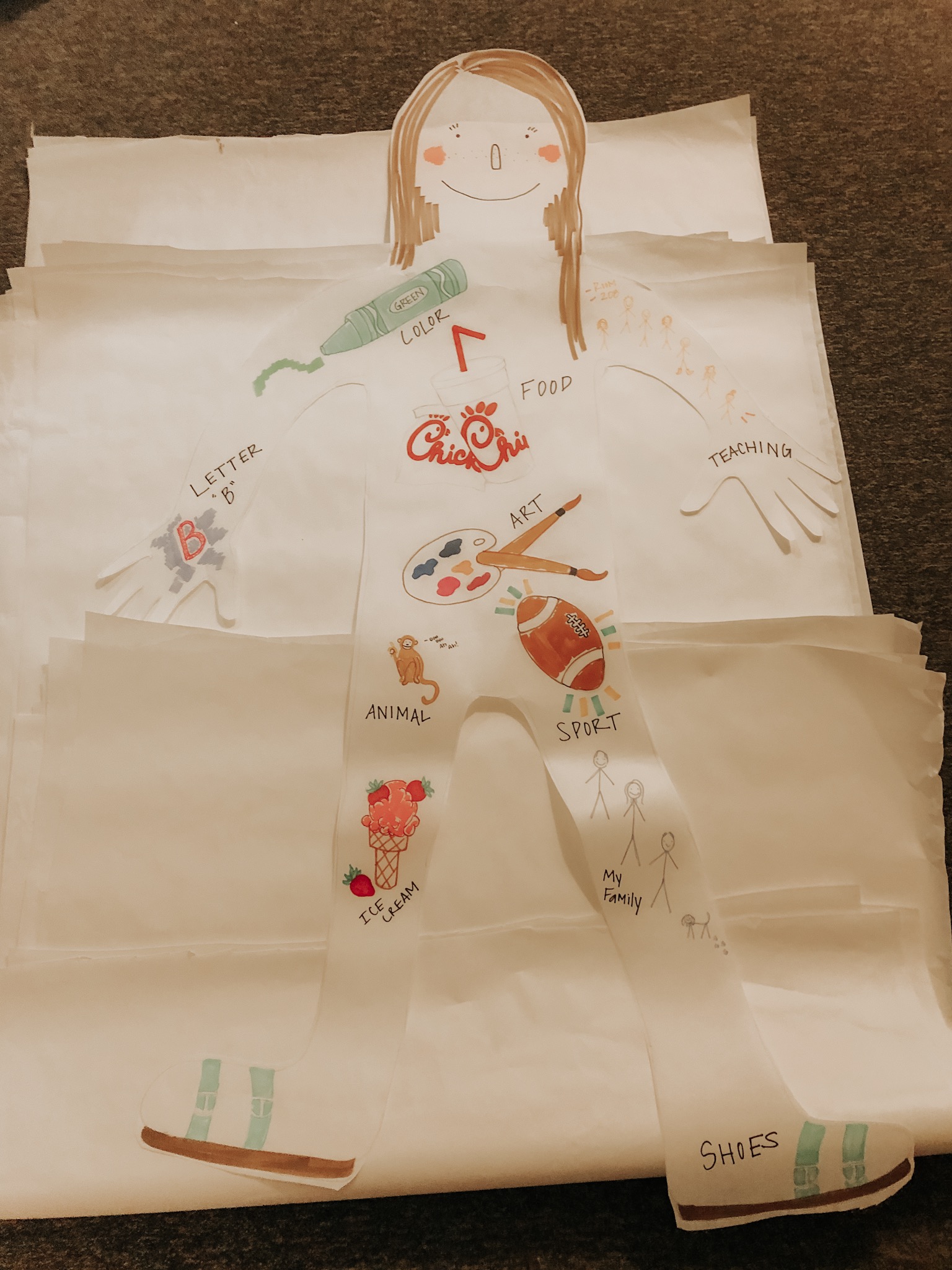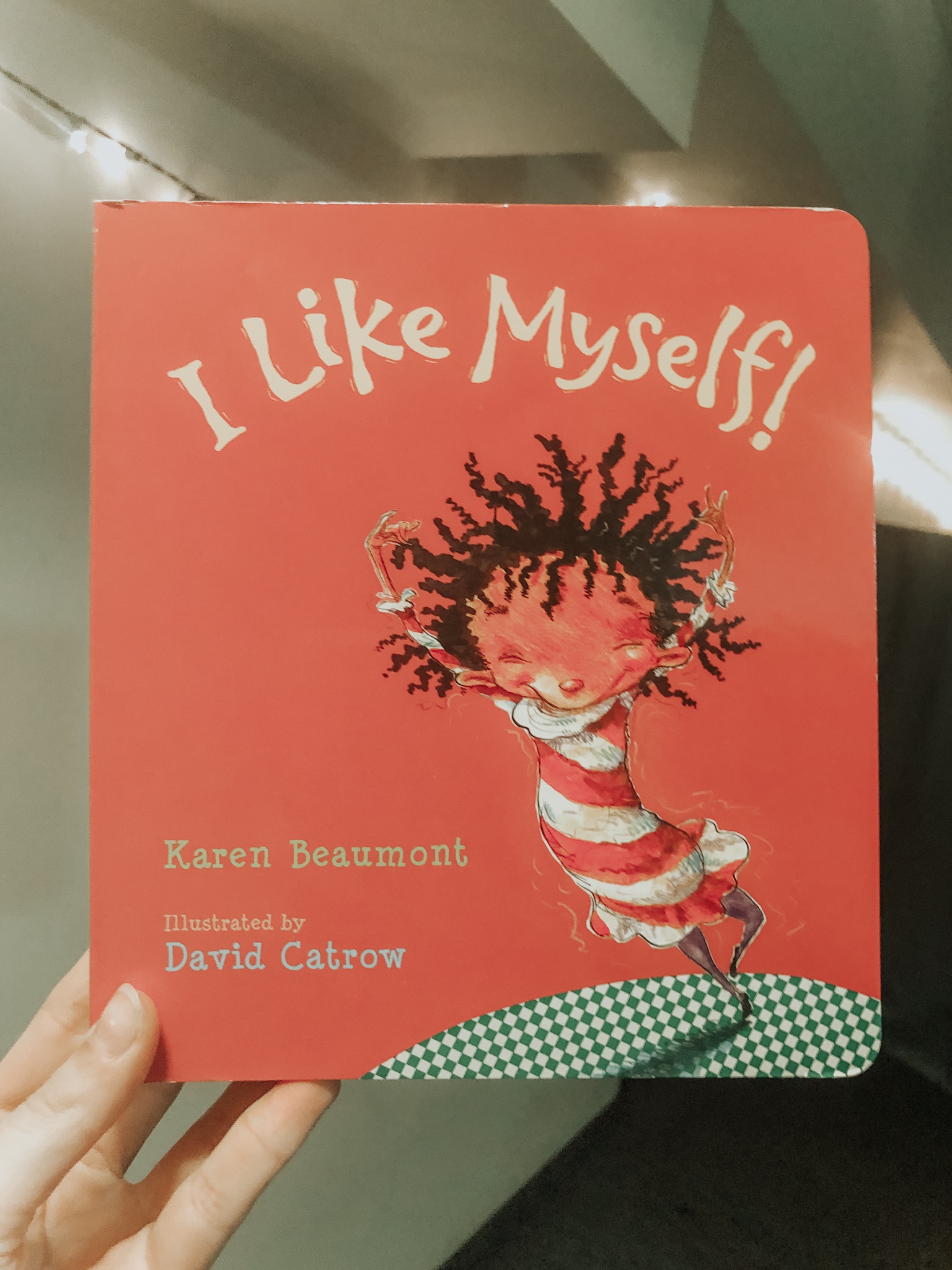Preschool Traced Body Self-Portraits
School/Teacher/Classroom or Arts Organization/Mentor: Urban Arts Academy, Room 208
Grade Level or Age of Participants: Preschool
MCAD Teaching Artist: Beta DeFlorian
Number of Students: 15 Students
Visual Arts Content or Standards
(Preschool, State standards do not Apply)
This project is most similar to the following Kindergarten standard:
Subject: 2. Social Studies: Peoples, Cultures, and Change Over Time
Strand: 2. Artistic Process: Create or Make
Standard: 1. Create or make in a variety of contexts in the arts area using the artistic foundations
Arts: Visual Arts
Code: 0.2.1.5.1
Benchmark : 1. Create original two and three-dimensional artworks to express ideas, experiences, or stories.
Curricular Link / Standards
This project, although not applicable to the Minnesota Core Standards, works with ideas of identity, guidance, and possible social studies.
Overview of Project
For this project, students will explore portraiture through physical interaction and critical thinking. Students will start by listening to stories that address characters picking out characteristics they like about themselves – both external and internal. Afterwards, the students will get their bodies traced and then be asked to draw some of their favorite things, their characteristic, and what makes them unique anywhere on the traced body.
“Big Ideas”/ Essential Question(s)
How do students perceive themselves/perceive others at such a young age?
What sort of physical and internal things related to one’s self do students pick out most?
Is it harder or easier for young students to pick out things they like about themselves compared to older students or adults?
How does the physicality of tracing the body impact making a self-portrait?
Student Outcome Objectives
Students will:
Become familiar with the idea of their body as a space, both physical and metaphorical
Understand their Canvas/Cut out body from piece of paper is unique, along with their interests and appearance
Depict their “favorites”: favorite animals, food, color, letter, etc…
Differentiate what makes themselves/each student different and recognize certain similarities
Create an original self-portrait based on their own selections and placement of imagery
Prior Knowledge
How to Use Coloring Tools/Markers or How to Draw (Whatever that may mean to them)
Certain Terms: “Favorite”, “Characteristics”, “Appearance/Look”
Names of Colors
How to use drawing tools
Lesson Preparation Timeline
April 29th: Gather/Purchase Materials – Buy Paper Roll
May 1st: Touch Base with Mrs. Brown, Solidify Exact Teaching Time
May 2nd: Meet with Lynda, Gather Markers from TA Closet
May 8th: Teach at Urban Arts Academy/Hang Student Work at Urban Arts Academy
Examples of Artwork/References
Additional Resources
I Like Myself! by Karen Beaumon
What I Like About Me! by Allia Zobel Nolan
Assessment
How will you know that the students learned what you intended and met the student outcome objectives? What will quality work look like?
The Teaching Artist will know students learned what was intended and produced quality work if the students have completed at least two or three images that they associate themselves with. For some students who have a harder time focusing and participating, success might be just tracing their body and including one color they like. Much of the assessment comes from talking with each student and having them explain what they are drawing, since with small students it’s hard to tell, and they can have a harder time staying on task. With such small students, they may be assessed on a person to person basis since they are at different levels of development, and some listen better than others. If students are tackling the project well, assessment may be each student going around and sharing one of their favorites they included or something specific to them, since they enjoy talking in front of the classroom and having the group listen.
Materials
Roll of paper for traced bodies ( amount TBD?)
Special Markers ( amount TBD?)
Scissors (Teacher Use Only)
Learning Activities and Timing
The teacher will read books aloud in front of class on round rug (10 Minutes)
I Like Myself! by Karen Beaumon
What I Like About Me! by Allia Zobel Nolan
The teacher will introduce the project verbally at the rug with exemplar to show students what they will be completing (5 Minutes)
At this time, the teacher will explain to the students how the books they just read correlate with the activity, pointing out examples
Introduce Stations (2 Minutes)
The teacher will also describe certain stations within the room (the tracing spot, the work spot, and the free play area) and guide students to free time, while both teachers start tracing students and sending students to start working.)
Direct children to activities/Remind them to be thinking about the project
Allow Students to work on Portraits (20 Minutes)
Help students get started on project, check in with each student, make sure each student has enough space, etc.
Hang Up Student Work (15 Minutes of Personal Time)
Hang the self-portraits in the hallways for others to see!
Teaching Artist Reflection
What problems are anticipated with this lesson?
Some students may not want to participate/May not want to be traced
Some students might not know what to draw, or how to draw it ( a lot of students asking you to draw it for them)
Some students will not listen and be wandering around the classroom
How does this project fit into overall curriculum planning or art experience for the classroom or organization?
This project fits well because Urban Arts Academy is very conscious about using the body in an appropriate and respectful way, this will add onto that idea. Urban Arts really focuses on mindfulness, this will give students the chance to focus on themselves, appreciating what makes them and their friends unique. This activity combines ideas already mentioned in the classroom such as letters of the week, reading circle, and answering and asking questions to fully learn.
How will your students’ work be shared with the larger community?
Student work will be displayed in the Urban Arts Academy hallway where students, faculty, community members, parents etc., are always walking by when they visit. These could potentially be saved for their annual gallery event Urban Arts hosts where student work is on display.
How will you receive feedback on your teaching methodology and quality of student work?
I believe not only the classroom teacher, but the other teachers and even the preschool director at Urban Arts would give me some verbal feedback along with the evaluation Mrs. Brown will be filling out. I also have asked students during other projects how they have liked things by showing me a thumbs up, down, or to the side. That could work for student feedback.
Gallery

